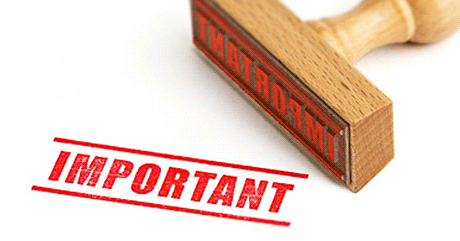Why is S. 967 So Important to the Ambulance Industry? Part I
April 27, 2017
Certain dates in history stand out as pivotal to the course and direction of the United States of America. April 27, 2017 will almost certainly stand out as one of those dates for the American ambulance industry if Senate Bill 967 is passed.
 On this date, Senators Stabenow, Roberts, Leahy, Collins and Schumer introduced S. 967 entitled the “Medicare Ambulance Access, Fraud Prevention and Reform Act of 2017.”
On this date, Senators Stabenow, Roberts, Leahy, Collins and Schumer introduced S. 967 entitled the “Medicare Ambulance Access, Fraud Prevention and Reform Act of 2017.”
Why is this bill so important to all of us? Here are our thoughts.
4 Parts
S. 967 addresses four areas to benefit all of EMS in America.
- Reform to the Medicare ambulance fee schedule
- Prior Authorization for ambulance transports of ESRD beneficiaries
- Requiring providers of services and ambulance service providers to submit cost data and other information with respect to ambulance services
- Treatment of ambulance service providers
Beginning with this blog post and each week for the next three weeks, we’ll look at each of these areas and provide our thoughts about what may be to come.
It’s important to remember, however, that as the American Ambulance Association (AAA) has warned, there will most likely be changes that take place as the bill gets passed around through the Finance Committee and then, hopefully, to the floor for final consideration.
Reform to the Medicare ambulance fee schedule
It’s been 15 years since the inception of the Medicare ambulance fee schedule.
The dinosaurs amongst us, can remember the days when the process of gaining payment approvals relied on a process known as inherent reasonableness which involved a formal request procedure to raise an individual EMS agency’s approval rates based on billing history and the prevailing market at the time.
The process really made no sense and payment rates were all over the place. Pockets of the country saw huge ambulance payments while others were reimbursed ridiculously low- and there was no rhyme or reason for it.
When the Medicare ambulance fee schedule was introduced, at least we now had a formula for which the Feds could determine what the payment rates would be across geography and while flawed, at least there was some structure to the process.
However, it didn’t take long for all of us to realize that the fee schedule underfunded most of us. Lobbying efforts produced a “band-aid” measure called the add-ons of bonus payments. Each year for many years Congress has passed these add-on payments on top of the fee schedule payments- 2% additional for urban areas, 3% for rural and 22.6% for the most remote areas of the Country labeled as super-rural. Plus the rural and super-rural areas receive a 50% increase in the mileage payment above and beyond the fee schedule amounts.
These add-ons always rode the coattails of what was then-known as the “Doc Fix” for the physician fee schedule and always were passed in the 11th hour just before (and one year even after- then paid retroactively) they expired. Left to lapse and the American ambulance industry would have reeled to fill the gap in reimbursement.
But, the “Doc Fix” has been permanently fixed, which means at the end of this year unless this measure passes the add-ons will disappear and with no real avenue to extend them, as in the past.
Increase the conversation factor for ground ambulance services
This bill will permanently increase the conversation factor in the Medicare ambulance fee schedule to include the add-ons in the fee schedule calculations.
The super rural is proposed to increase by 25.6%, the rural census tract areas would remain at 3% and urban approval rates would be boosted by the same 2% factor. The revisions would become effective January 1, 2018.
Mileage boosts would be calculated at an additional 3% for the super-rural and rural areas and the urban providers would actually see an increase of 2% within the calculation methodology.
Important Why?
The Why of this is simple.
No ambulance service that we know of can stand to lose a single penny. Losing 2%, 3% or 22.6% of our money potentially would drive the final nail into many an EMS system’s coffin of demise. Costs have skyrocketed while reimbursement have been stale- and that includes the bonus payments.
If left to languish, already squeezed EMS budgets would be choked.
Now’s the time to push hard. Take action! Contact your U.S. Senator’s office TODAY to advocate for S.967 to pass!
